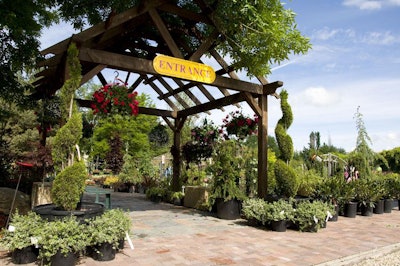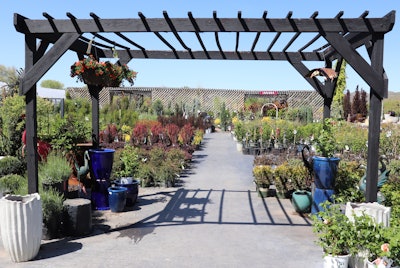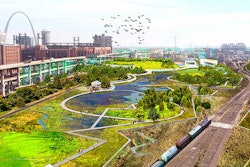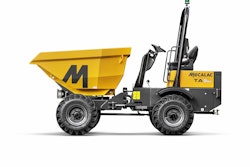 Photo: Franz Witte
Photo: Franz WitteIf your customer’s landscape is the canvas you are working on, then the plants you choose to install can be considered your medium.
Just like any good artist chooses quality paints or other art supplies, it’s important for you to select quality nursery plants that will be more likely to last the lifetime of the landscape. Not only will your customer be able to enjoy the design as you intended for years, but it will also save you from having to deal with callbacks about dead plants that didn’t live past a month.
Now obviously, no matter what level of quality plant material you choose to use, either your company or the customer will have to keep up with its maintenance, but purchasing healthy nursery stock can start you off on the right foot.
Below are some tips to ensure you’re selecting good nursery stock.
Buy from a trusted plant nursery
One of your best options when looking for a solid nursery stock source is to buy from a trusted local nursery.
“Local vendors know the best plants for your particular area and can help you make proper substitutions if need be,” says Carly Geidl, contractor sales manager with Franz Witte, based in McCall, Idaho. “Your local sales rep can send you photos of the actual product and answer any questions.”
Bob Smart, nursery manager for Roebuck Wholesale Nursery based in Roebuck, South Carolina, adds that you should be aware of and know the American Standard for Nursery Stock. He says you should make sure the vendor is a licensed and inspected grower.
The plant nursery should be clean and pest-free with knowledgeable staff. The plants in the nursery should be well cared for and healthy.
 Photo: Franz Witte
Photo: Franz Witte“Look around the nursery and if you see rootbound, diseased or undernourished plants in the area, you might want to look closer at what you are selecting,” Smart says. “Healthy plants exhibit shiny and lush foliage. The shape of the plants should be compact and full without any trunk damage or broken limbs.”
Smart suggests attending industry trade shows and visiting several nurseries to know what healthy plants and trees should look like at any season or stage of growth.
“I feel that experience cannot be replaced and recommend the plant buyer train others on their team in what to look for when selecting material,” he says.
Another way to know you’re probably not getting the best plants is if the price is far lower than expected.
“If the price is too good to be true, it probably is,” Geidl says. “There are many growers that focus on quantity, not quality. Your local nursery will know which growers to source from and only bring in quality plants.”
Order early on
Another way to ensure you end up with healthy plant stock is to opt for plant pre-purchases on projects.
“This gives the buyer more time to source from preferred vendors rather than whoever they can find them from at the last moment,” Geidl says. “Shipping of large quantities directly to your job site can also be arranged given ample time. This can save you a significant amount on freight and labor.”
Geidl says it is never too early to submit nursery stock requests, as the time needed to source the materials greatly varies depending on the item, quantity and the given timeframe.
For the most part, Smart says the quality and health of the plant material is consistent whether it is ordered now or pre-purchased in advance.
“Currently with the good economy and development going strong, there is a risk of certain plant material not being available,” Smart says. “Substitutions on landscape jobs can be a common thing. In our area, plants can be ordered on Monday and be received via truck or other means the same week or a few days later.”
He says a good relationship between the grower and the garden center, landscaper or e-commerce company is the most important.
Common red flags to look for
When examining plants at a nursery, here are some of the red flags to look for with trees and shrubbery.
Signs of sickly trees include discolored leaves, stunted or distorted leaves and whole branches with no foliage.
“Wilted foliage is a sign of root distress or plant disease,” Smart says. “Plants infested with insects should always be avoided. Small holes in the trunk may be a sign of bores and sunken areas could be a sign of canker problems. Lichen when growing on younger immature trees is generally a sign that the tree is in decline. Fungus growing on the bark shows there is dead bark or wood present. Stunted plant growth is another sign the plant has problems.”
Shrubs that have discolored or stunted leaves, bare branches or soil that smells bad can be indicators of an ailing plant.
 Photo: Franz Witte
Photo: Franz Witte“Generally, pest and disease attack weak, undernourished plants,” Smart says. “It does seem that shrub problems can show up quicker than trees. The general appearance of the shrubs should have a lush blue/green foliage, the exception of those that are variegated. The foliage should be growing all the way to the ground. Plants that are grown too close together will lose their leaves and possibly any new bud growth in that area of the plant creating a bare bottom or one-sided plant.”
Both Smart and Geidl advise visually inspecting the plant’s root system.
“Slide the plant out of the container and look for white root ends and tips,” he says. “Keep in mind some plants have yellow, purple or even pink roots. If roots are black, dark brown, mushy and slide apart, the roots are dead. Make sure the roots are not circling the container.”
When looking at a balled and burlapped tree’s roots, Geidl says to check the root ball’s size compared to the size of the plant, and to make sure the trunk does not wiggle in the ball. If it does, this is a sign of poor root quality or that damage has occurred to the root flare.
Keep an eye out for pests and diseases, such as mites or powdery mildew. Also, check for cultural issues and signs of malnutrition.
“If plant material is not cared for or fed correctly at the nursery level – it will not thrive once you plant it,” Geidl says. “This can drastically delay its establishment and growth.”
Pros and cons of bare root plants
There are three common packaging types for nursery stock and each has its pros and cons, so be sure you know which is best suited for your situation.
As for buying bare root plants, these are typically less expensive upfront, have less planting labor and you can see the root structure, Geidl explains.
“The biggest pro about bare root plants is their root system generally has a more fibrous and a more natural or completely developed root system than that of containerized plants,” Smart says.
You also have the option of root pruning any dead, damaged or girdled roots before planting.
Geidl says the cons of bare root plants are that you have a limited planting window in the early spring before they break dormancy, they take longer to become established and have a higher mortality rate.
Pros and cons of container plants
Container plants can be purchased and planted all year long. Geidl says another pro is they can be grown by skilled growers with proper nutrition, pruning and root development.
“They can be transported, planted or shifted up into a larger container any time of the year,” Smart says.
Some of the drawbacks of container plants are that they’re more expensive upfront and you can’t see the root structure, Geidl says.
“The downside to containerized plants is their roots are more exposed to the elements if they are grown above ground,” Smart says. “The moisture in the containers must be maintained at the appropriate level before planting. More winter protection is required with containers sitting on top of the ground during the winter months while waiting to be planted.”
Pros and cons of balled and burlapped plants
Geidl says balled and burlapped plants are typically less expensive than container plants and they allow landscapers to get very large plant material.
“If you are needing bigger plants, they will need to be field grown, dug and burlapped,” Smart says. “Field grown plants generally have a more natural, fully developed root system. The root system is generally more developed compared to the size and age of the plant. Digging the plant will root prune it.”
The cons of balled and burlapped nursery stock are you can’t see the root structure, they are more susceptible to damage during transport and freight is typically more expensive due to the heavy weight of the root balls.
Smart says balled and burlapped material is generally too heavy to handle without equipment.
“Larger plants sometimes need staking once planted, especially if the burlap and wire basket is removed,” he says. “There are a lot of opinions on removing the wire basket and burlap when planting. In our area, where the moisture in the soil is maintained at a higher level than other parts of the country, a good rule of thumb is to remove the wire basket and burlap down to at least 15” on the root ball. If the burlap is non-treated, it and the wire basket should both disintegrate without causing issues.”










